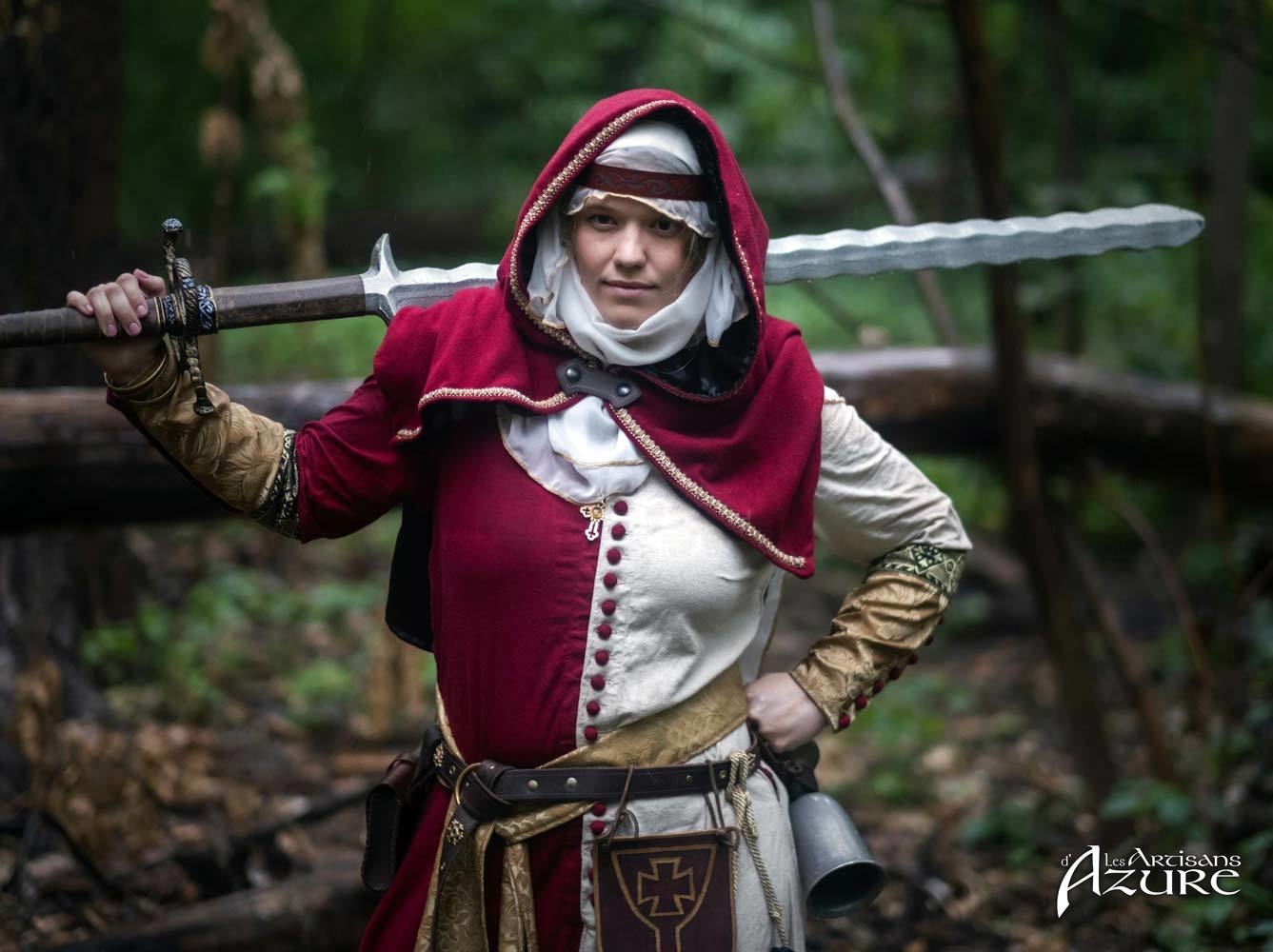LARP Combat: How Does it Work?
How Does LARP Combat Work?
|
Combat is an important aspect of many live action roleplaying games, may it be as a way to express conflicts and rivalries between groups and characters, or as a basic part of gameplay, to spice the activity with action and battles. From an outside view, these mock battles and simulated combats may appear confusing or overwhelming. It's often one of the first question that is asked to LARPers, and with good reason. After all, the complexity of LARP combat is widely admitted by LARPs themselves. Each distinct event will write lengthy combat rules to regulate this part of play. |
What are the types of LARP combat?
LARP combat expresses itself in many forms. Each singular activity may includes only one or some of these combat types.
➼ Physical Combat
Physical combat is the most widespread category of combat in LARP. It involves foam weapons and direct strikes at your opponents, giving the game a somewhat sportive aspect relying in part to the player's skill and fighting prowess.
In some LARPs, physical combat can be high intensity and assumed to involve some risks, not unlike combat sports. These events will often aim for more accurate combat simulation and allow riskier manoeuvres, like attacks to the head, sword thrusts, and faster, stronger strikes. If the goal isn't historical realism per say, it is highly competitive and the combatants aren't pulling any hit.
At the polar opposite of high intensity combat and sport fencing comes theatrical combat, more influenced by performance fencing as seen in cinema and video games. Theatrical combat is a show, with exaggerated swings, flourishes, and generally telegraphed strikes that allow the fight the drag longer and create an engaging scene. It is also often gentler and much less competitive, with the fighters sometimes even agreeing on a winner before the fight starts. In a way, the skill level of the combatants is here less relevant than their narrative importance.
Obviously, most LARP events will find themselves somewhere in between these two opposite approaches. How sportive or theatrical the combats are expected to be will be hinted through various combat rules and by watching how the other players fight in play.
Combat may also involve large groups of people, which come with its own challenges and limitations. Mass combat will only occur in larger events, and brings a strategic dimension to battles that is unseen in small skirmishes and duels. Positioning, flanking, forming good lines, and working in team is more important in mass combat, and it brings a very different kind of dynamic to these battles.
➼ Non-physical Combat
In LARP, combat may also involve non-physical interactions. The most common form this may take is through the shape of make believe that cannot be simulated with physical actions, things such as magic in fantasy LARPs, or special powers like poison, explosions, or anything that has to be imagined by the participants, with or without props and visuals helps.
In combat, this could take the form of a warrior charging at a character, only to be told ''out of game'' that they have to collapse on the ground and act as if they were electrocuted by a magical lightning bolt. That would be make believe magic used in a combat to disable a foe. Of course, there are rules to such imaginary powers, or else it could quickly turn into nonsensical godlike displays of power, but this is the general idea.
That sort of non-physical combat requires briefly interrupting the action with short instructions and calls pronounced ''out of character'', and thus isn't always part of a specific LARP combat system. However, it also one of the only practical way to put in play some famous fantasy tropes such as the battle wizards flinging spells left and right.
Another form of non-physical combat can be referred to as narrative combat and is often very similar to the way combat is handled in tabletop roleplaying games. The opposing sides do not face in real time, and rather take turns detailing their actions to a storyteller, which may use dice rolls or other systems to dictates how successful the characters are and what ultimately happens in this combat. These scenes are often handled apart from the play, in private. They may coexist with physical combat, but used in different situation, or replace it completely as the way to handle combat in that particular event.
LARP combat rules
|
If every LARP has its own rules concerning combat, they do share a few key elements. With physical combat, you use LARP weapons such as a foam sword to strike at your opponents, with the goal of landing a hit and touching your opponent's body with your blade. All combatants have given statistics that dictate how many hit they can take before being injured or going down. Those are called hit points and are taken from the tabletop and video game worlds. Some attacks or weapon types may remove more hit points with each hit, and some characters may have special moves that allow them to influence the fight in unpredictable ways (for instance, forcing an opponent to drop a shield, or to fall on the ground). Many LARP events also include rules involving what is often referred to as ''swordplay''. Swordplay can be summarized as physical acting involving combat, weapons, as well as some elements of combat etiquette. For instance, rules could be established about how much a weapon must move to count as a strike, or how fast someone is allowed to hit with some weapons. Acting the pain or impact of a strike is also often part of swordplay, both as a way to make clear a player counted the hit and a tool to improve immersion. Most LARPs handle character injuries, healing, and death in their own ways, but most events offer easy ways for any combatant to get back on their feet after combat, given adequate assistance by a healer or priest. Battle is much less deadly for LARP characters than it was for real life historical warriors. |
Is LARP combat safe?
LARP combat can vary widely in intensity, as described previously, but even the most physical types of LARP combat are much safer than any combat sport, or even activities such a paintball or airsoft. If injuries do occur, they generally have less to do with the combat aspect, than simply being the result of running on uneven terrain or taking a bad fall.
Widely, direct physical combat like grappling and pushing are forbidden, or only done theatrically between consenting players. The weapons are the only things allowed to strike, and they are made with safety in mind. They are typically made in foam that is soft enough to absorb impact, but dense enough to keep its shape and survive repeated use. The cores of the weapons are generally made of fiberglass or rigid plastics, providing a flexible yet solid basic to limit weapon whipping too hard, while flexing to absorb some of the force of each hit. Most LARP also control the weapons at each event to remove weapons that are too damaged to be safe, or badly made.
Players that hit too hard or flail their weapons without care are heavily policed by either the event organizers or the general community in most LARPs, making these padded weapons safe to use. A bruise here and there may occur if players don't wear any armor, but injuries are rare indeed.
However, bows and arrows have been receiving more attention lately, with poorly designed arrows and overpowered bows causing some injuries in large battle LARPs. For this reason, they are more heavily regulated that melee weapons, and it is now advised to buy these ranged weapons from trusted brands and retailers.
Conclusion
Combats and battles are a unique and fun aspect of LARP, and we hope that this short summary made this aspect of play easier to picture, and with some luck, made you want to give it a shot. If you ever want to learn more about LARP combat and get some weapons in your hands, you can always visit us in our store. We will be happy to tell you all we know about fighting and roleplaying!








Leave a comment